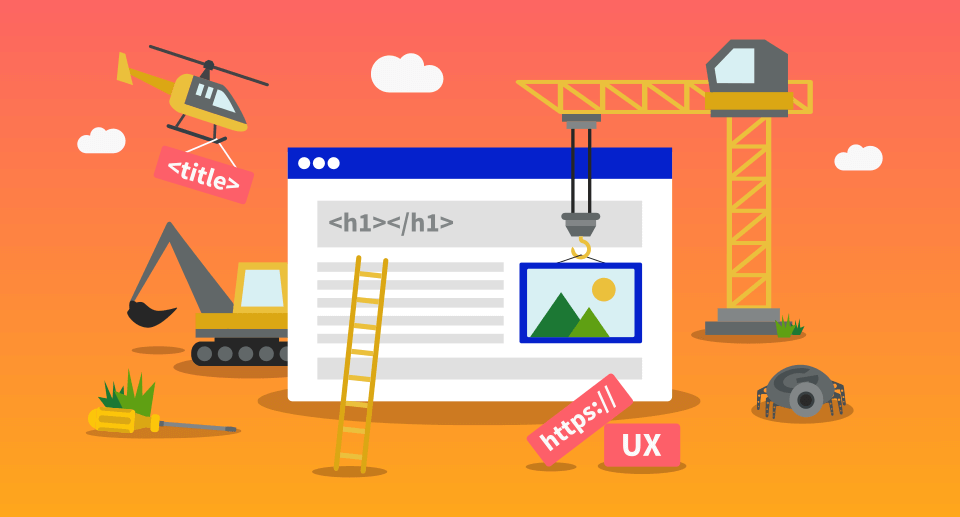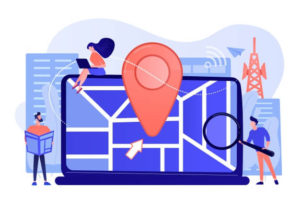Search engine optimization is a constantly changing field, and webmasters must keep up with the latest approaches. Nowadays, search engines are more concerned with user experience than with ranking websites high in search engine results pages (SERPs). It’s critical to pay attention to new on-page SEO techniques in order to excel in 2022 and attract more visitors.
To improve your Google rankings, you’ll need the appropriate mix of natural backlinks, flawless content that’s optimized for your goal topic, a wonderful Google-friendly website, and beautiful social signals that demonstrate your authority, among other things. On-page SEO and off-page SEO are two different aspects of the search engine optimization process.
In this post, we’ll discuss how to use the best and most up-to-date on-page SEO strategies 2022 to optimize your post for higher ranks without violating any of Google’s quality rules.
Table of Contents
What is On-Page SEO?
On-page SEO is the process of making your blog post (individual web pages) optimized for search engines so they rank higher and get more clicks (traffic) from the SERPs.
These On-Page SEO techniques include optimizing the text content (meta tags, permalinks, web copy, images, etc) and optimizing the HTML (including removing unwanted codes, mobile-friendly site, no iframes, loading time, etc.) of the web page.
Benefits Of on-Page SEO Optimization in 2022
The simple answer to this is, through by optimizing your site for search engines like Google you can funnel a heck load of traffic from them to your business website.
This stands true for every online business and they invest in SEO efforts no matter they are bloggers, small business website owners, freelancers, or big giants like Amazon and Techcrunch. Every form of online business takes the effort to optimize its website for search engines.
Here are the main benefits of on-page SEO optimization and why you should consider it:
- Most on-page SEO strategies focus on one topic, that is user experience. Better user experience = more conversions.
- Following the latest on-page, you can easily get higher rankings on SERPs, which means your website will be visible to as many people in your niche as you want.
- Better ranking = more traffic = more leads, sales, ad-clicks and overall revenue.
- SEO leads have a far higher close rate (14.6%) than other methods of outbound lead generation like direct mail or print media (1.7%).
- Per dollar spent, small business SEO generates approx 3 times as many leads as traditional marketing.
- 75% of the users never scroll past the first page of the search result. And hence, you need to make every effort to optimize your site to rank on the first page. And for that, you need a great on-page SEO techniques strategy.
How To Write An Optimized And SEO-Friendly Blog Post
On-page SEO Strategies
1. Write Original And Detailed Content
Your blog’s content is by far the most crucial SEO method to pay attention to. Writing unique content takes time and work, but it is what the search engines like. Your reputation may be harmed if you use copied content on your site since your readers will quickly recognize your tone and substance.
This can be even worse if the owner discovers your work and sues you for copyright violation. If he files a DMCA, you can at the very least have your site taken down.
As a result, writing original and new material is highly suggested. If you’re hiring writers to create content for you, be sure it’s not spun (copied content with jumbled wording).
2. Have A Solid Keyword Placement Strategy
Keyword Placement is the most important thing in on-page SEO optimization. You have to be very smart when placing the right keywords at the right locations.
Make use of H1, H2, and H3 tags. Make sure you use your target keyword at least once in any of them. However, don’t overdo it by stuffing so many keywords multiple times in these heading tags. They should be placed in a way that the content flow is not disturbed. Use keywords in the first 100 words and try to make things as natural as possible. Optimize your images for your keywords too.
3. Optimize Your Images With Alt Tags, Title Tags & Captions
Images are the most neglected on-page SEO component, but if correctly optimized, they may drive a lot of traffic to your site and enhance its SEO health.
- Rename the image file to something that is human readable and about the topic. For example, change file names like 123.jpg to seo-strategy.jpg. It helps the image show up in the image search when someone searches for SEO strategy.
- Give an Alt text to describe the image. Alt text is the text that appears in place of image when someone with a slow connection fails to load the image. This also makes it easy for search engines to know what the image is about.
- Use a caption whenever possible because captions are read 300% more than the body text.
4. Boost Dwell time
Dwell time is defined as the actual length of time a user spends on a page before returning to the search results. Having a dwell time of 2 minutes or more is considered a good SEO signal while if a user returns (back to search) in a few seconds you are said to have a poor dwell time (and hence bad on-page SEO).
How does dwell time affect search engine rankings? Or if it is even a ranking signal?
For search engines like Bing, a site’s stay time is a major ranking indication, however, Google has carefully avoided mentioning dwell time calculation as a ranking signal.
However, if you look back far enough in Google’s algorithm history, you’ll notice that dwell time was formerly a ranking indication that was never formally eliminated.
Dwell time is naturally linked to higher rankings since it indicates valuable content (readers are staying on your page), as well as user pleasure (user loved your article hence reading more posts). Let’s look at how to use dwell time as an on-page SEO component and what on-page SEO approach you’ll need to boost your site’s dwell duration.
How to boost your website dwell time and increase on-page time spent by users?
- Add multimedia: As simple as it may sound, I don’t see much multimedia on most blogs, even though most bloggers are aware that adding photos, videos, and.gifs is the greatest method to keep visitors on your site. A relevant video embedded on your page could keep your visitors on your site for a few minutes longer.
- Write lengthy content: While many people consider old content to be a boring effort, it is a valuable resource for readers.
- Create engaging content that allows your audience to connect with you. Write in a conversational tone, as though you’re chatting to a single reader sitting right in front of you.
- Avoid false show off by not optimizing your content for numerous keywords or using a separate keyword in your headline. These postings plainly mislead the reader onto your site, causing them to quickly return to the search results.
5. Optimized Permalink Structure
Permalinks are very crucial for a site’s SEO.
However, the value that it had in the past diminished a bit because Google prefers more of the content part, but still, it is good for SEO if you have really nice, clean, human, and search-friendly URLs.
Ideally, in the anatomy of a URL, a permalink is the part of the URL that comes after the main domain as shown in the screenshot below:
If you are just starting your blog, make sure you choose the best permalink structure which is short and simple. This is a one-time task.
Having a simple URL structure for your blog will help to make your blog optimized for search engines and improve traffic.
Now, whenever you draft a blog post, you can edit the permalink to something that describes that particular blog post.
WordPress, by default, includes the whole article headline in your URL, you don’t have to do it.
6 common SEO mistakes and how to avoid them
6. Internal Linking
Internal linking of your articles is important since it improves the structure of your blog and encourages people to click on the links and read other articles on the site.
It does contribute to a decreased total bounce rate on your site, which is good for SEO. Wikipedia is the most well-known example of interlinking.
How to optimize internal linking for maximum on-page SEO benefit?
- Link to related articles: When creating an article, include links to similar resources. For example, in the part on optimizing content in this post, I linked to numerous content tools. Readers that are interested will check out and assist me minimize my bounce rate by reading another resource on the subject.
- Link both pages and posts: Pages have the disadvantage of being completely cut off from the rest of the content archive. Unless you correctly link them in your menu or blog entries, no reader will ever locate them. Important pages, such as your blogging toolbox page, should be included so that visitors may readily locate them.
- Do follow your internal links: Nofollow links make it impossible for search bots to follow the linked page. So if you are internal linking your blog posts, make sure they are dofollow so that your old content gets some link juice and keeps ranking.
7. Add Outbound Links
An SEO shows that outbound links do have a positive impact on SEO. Google considers your site as a good source of information since you offer good content with good resources linked as well.
When you add outbound links, you are actually sending readers to go to the other online sources for getting more information on particular topics.
And, this is what Google loves.
You might lose some traffic in this on-page SEO technique, but hey! giving your users a better experience and sending them to additional resources on the topic (because you can never cover all) is a good way to optimize your site for users as well as Google.
And, if Google loves your site, your ranking will be higher for sure.
8. Improve Your Site’s Speed For SEO
The time it takes for a website to load has a direct impact on its ranking. In Google’s ranking algorithm, site speed is a key on-page SEO consideration. Not only that, but a quick-loading site is also important for the user’s experience.
This crucial on-page SEO approach should not be overlooked at any cost. A millisecond delay in loading might lose you revenue and visitors.
According to a Kissmetrics study, 47% of visitors anticipate a website to load in under 2 seconds, and if it takes more than 3 seconds, they will quit the site.
This implies you’ll need to pay close attention to how you reduce page loading time and improve this SEO tactic.
How to optimize your site’s speed for on-page SEO 2022?
- Use caching plugins like Super Cache, WP-Rocket, W3 Total Cache.
- Use light images.
- Lightweight WordPress theme. Most fancy themes try to attract customers by adding features you eventually never use. These elements, however add to the site’s loading time. I suggest use something very light and optimized for speed.
- Remove unnecessary widgets from the sidebar. Most visitors are ad-blind so try subtle ways to include affiliate products within your article, not in the sidebar.
- Use a CDN.
- Use a fast web hosting server
You can test your site’s loading time using Google’s page speed tool which also gives valuable insights about what’s wrong and how you can correct it.
9. Add Optimized Meta Title And Page Title For Your Blog
Bloggers frequently mistake these two for one another, but they are not the same!
The page title is what you see on the blog as the article title, while the meta title is what you see in the search. Page titles are excellent H1 tag examples, as they are the H1 tag of a post by default. Because the H1 element is intended for the article heading, you should not use it anywhere else in the post.
Meta title and page title optimization are critical SEO methods to employ. You may keep both identical; in fact, most bloggers do, but you can have two versions of titles, one for your readers and one (with keywords) for search engines, to optimize better.
You can have a title of any length on your blog. However, Google keeps 71 characters in your site title before it truncates them. So it is very essential you have a meaningful title in the SERPs.
How to optimize page title and meta title for better click through rates?
- Keep the Page Title and Meta title relevant to the content. Don’t write something spammy in the Meta title just to optimize it better. Always keep it relevant.
- Always have the targeted keyword at the beginning of the meta title. This does impact the search algorithm as well. Keeping the target keyword makes the search engines understand more about the content.
- Feel free to add modifiers to your meta title because these help in boosting the CTR of your posts and thus more rankings. Power words like Best, Your, Wow, Unbiased etc can significantly boost CTR in the SERPs.
10. Optimize The Meta Description
A meta description is information about your page that appears in the search engine results below the title / URL of your page. The description does not directly factor into your search engine results page (SERP) rank but influences whether a user clicks on the link to your page.
If you write the Meta Description in a better way, you can get more clicks by convincing your readers to click in. Therefore, not for the sake of SEO but for a better user experience, you must write a better description of your content.
Conclusion:
On-page SEO isn’t something that is only for search engines, the hidden trick is to make your website ridiculously pleasing for your users too.
Creating a post that is optimized for on-page SEO best practices can seem like a daunting task. But at the end of the day, everything comes back to the user. If you are adding a feature that is good for SEO but will hurt the user experience, prioritize the user.
The goal is to create something great for the user. Don’t be afraid to experiment and push the boundaries. That is how great content truly gets made. If your post isn’t ranking, come back to this list and tweak it accordingly.
And remember, there are always exceptions to the rule. This is especially true with every recommendation listed above.
If you have any questions or are unsure of any of the recommendations in this post, please leave a comment.











